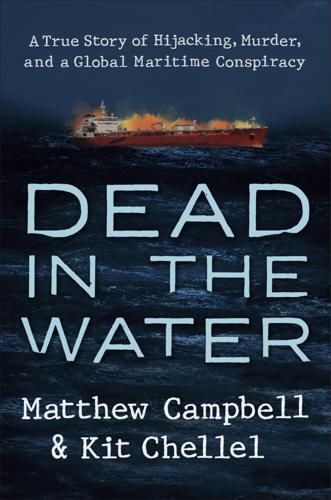
Dead in the Water: A True Story of Hijacking, Murder, and a Global Maritime Conspiracy
by
Matthew Campbell
and
Kit Chellel
Published 2 May 2022
France’s domestic oil reserves are minimal, and to produce the gasoline demanded by its consumers the Donges refinery relied on a steady flow of tankers making their way up the estuary—all of them crewed by men like Marquez. After months on the oceans, it would be Marquez’s last port for a while. He was booked on a flight to Taipei, connecting onward to Manila for a well-deserved break. Trips home are momentous events for Filipino seafarers, not only because they’re a rare chance to spend time with the families for whom they work so hard. The visits also serve as occasions to distribute the relative prosperity afforded by their wages, and, in performing that ritual, to show off a bit. Gifts would be all but obligatory, for children and parents of course, but also aunts, uncles, cousins, friends—concentric circles of obligation for every returning sailor.
…
GO TO NOTE REFERENCE IN TEXT By April, Al Qaeda militants: “Rival Demos Pack Yemen Capital Under Security Net,” Agence France-Presse, Apr. 29, 2011. GO TO NOTE REFERENCE IN TEXT A July 2011 report: “Yemen’s Turmoil: The Southerners Flex Their Muscles,” The Economist, Jul. 2, 2011. GO TO NOTE REFERENCE IN TEXT After building up some experience: Gunnar M. Lamvik, “The Filipino Seafarer: A Life Between Sacrifice and Shopping” (Doctoral diss., Norwegian University of Science and Technology, 2002), 161. GO TO NOTE REFERENCE IN TEXT Seafarers are responsible: Review of Maritime Transport 2020 (New York: United Nations Conference on Trade and Development, 2020), 20.
…
By then, Mockett’s next big job had sailed through the Suez Canal and was cruising through the Red Sea toward Aden at a steady twelve knots. Painted in white letters on a blunt, flat bow was the vessel’s name: Brillante Virtuoso. CHAPTER 2 THE GATE OF TEARS In more than a decade at sea, Allan Marquez had seen the world—and it looked, for the most part, like the inside of a ship. The forty-year-old Filipino sailor had been born in a small town in Batangas, a coastal province south of Manila, on a plain of modest farms worked by sprawling, hard-to-feed families. But for the luckier and more adventurous among the men of Batangas, there was another option, more lucrative if hardly less difficult. Becoming a seafarer, as they’re known in the Philippines, meant first attending a training college and then finding an assignment from one of Manila’s manning agencies, lightly regulated companies that source crews for shipowners they’re unlikely ever to meet.
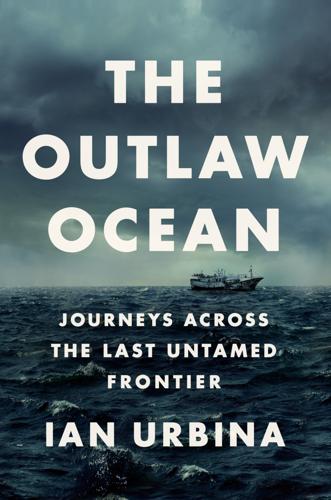
The Outlaw Ocean: Journeys Across the Last Untamed Frontier
by
Ian Urbina
Published 19 Aug 2019
Korea May End Search for Missing Fishermen off Russia,” Yonhap News Agency, Dec. 19, 2014; Kim Soo-yeon, “South Korea Set to End Search for Missing Crew of Sunken Trawler,” Yonhap News Agency, Dec. 29, 2014; “Survivors of Sunken Oryong Trawler Come Home,” KBS World News, Dec. 26, 2014; “Third Day of Storms Hamper Rescue Efforts for Sunken South Korean Trawler,” Sputnik News Service, Dec. 8, 2014; Kim Tong-Hyung, “11 More Bodies Recovered near Sunken SKorean Ship,” Associated Press, Dec. 3, 2014; “Three of 13 Filipino Seafarers in Korean Trawler Sinking Come Home,” ForeignAffairs.co.nz, Jan. 8, 2015; “Trawler Wreck Worst Maritime Accident in Recent Years in Far East,” Interfax: Russian & CIS General Newswire, April 2, 2015; “Two Seaborne Aircraft to Join Search for Oryong-501 Crew—Navy Commander,” Interfax: Russia & CIS General Newswire, Dec. 10, 2014; “US Rescue Teams Join Search for Missing S.
…
The Urban Whale: North Atlantic Right Whales at the Crossroads. Cambridge, Mass.: Harvard University Press, 2007. Laist, David W., Amy R. Knowlton, James G. Mead, Anne S. Collet, and Michael Podesta. “Collisions Between Ships and Whales.” Marine Mammal Science 17, no. 1 (2006): 35–75. Lamvik, Gunnar M. “The Filipino Seafarer: A Life Between Sacrifice and Shopping.” PhD diss., Norwegian University of Science and Technology, 2002. Langewiesche, William. The Outlaw Sea: Chaos and Crime on the World’s Oceans. London: Granta Books, 2005. Lanier, Frank. Jack Tar and the Baboon Watch: A Guide to Curious Nautical Knowledge for Landlubbers and Sea Lawyers Alike.
…
Typically, their salary was about $235 per month—a fraction of the minimum wage required under law, at least while they worked in New Zealand’s waters. From this wage, labor agents deducted expenses like “currency variations,” “transfer fees,” and medical checkups, which, in some instances, amounted to 30 percent of their earnings. Indonesian and Filipino sailors from the sunken Oyang 70 wait in line to leave New Zealand in August 2010. To get the jobs, the men often had paid over $175 in fees—more than a month’s salary for some. And as collateral, they often handed over their most prized possessions to ensure the completion of their two-year contracts: home deeds, car registrations, and in one case the land grant certificate for a community mosque.
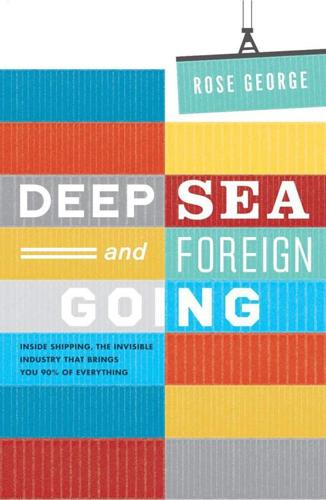
Deep Sea and Foreign Going
by
Rose George
Published 4 Sep 2013
The Filipinos play computer games and sing. It is common to climb the accommodation house stairs to the faint caterwauling of a Journey song in a Tagalog accent. Perhaps other entertainment happens behind cabin doors too: in a paper entitled ‘The Filipino Seafarer: A Life between Sacrifice and Shopping’, the Norwegian academic Gunnar Lamvik revealed the alarming practice among Filipino seafarers of slicing open their penis with a razor and implanting ball-bearings or coffee beans. The implants are called bolitas, and the logic behind their use is flexible. Either they keep wives from straying by enhancing their sexual pleasure, or they are useful for attracting Brazilian prostitutes.
…
I’m surprised to find a woman on board when only two per cent of seafarers are female, but I’m glad to see her too. The officers’ nationalities are mixed, but the crew – non-officers – are all Filipino. This is to be expected: Filipinos make up more than a third of all crews worldwide. A quarter of a million of them are at sea. They are popular, a Filipino seafarer once told me, because ‘we are cheap and speak good English’. They are the new Malays, who were the new lascars – Asian seafarers widely employed up until the Second World War – and they will probably be replaced by the next wave of cheaper English-speaking crews. Introductions: the bo’sun is Elvis.
…
His is a ministry of small gestures with great impact. A SIM card, a battery, a gift for a man who has spent yet another Christmas at sea. At Christmas, Immingham’s centre delivers 1300 shoeboxes of donated gifts to seafarers. In mid-January there are boxes still left over from the Christmas deliveries, so Colum approaches a group of Filipino seafarers sitting near the fountain. The fountain has toy penguins perched on its edge. They were in the Christmas crib, says Colum, as if that is normal. He asks who was at sea for Christmas, then gives a box to a seafarer named Jude, who seems pleased. He has time to talk, and as is usual with seafarers, big things arrive quickly into the conversation, so that Jude tells us he has yet to meet his youngest son, Elijah, born four months ago.
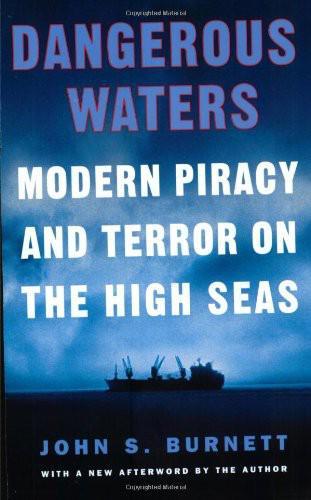
Dangerous Waters: Modern Piracy and Terror on the High Seas
by
John S. Burnett
Published 1 Jan 2002
Brian Orrell, NUMAST General Secretary, claimed that often “captains are a convenient target in the absence of owners, operators, or charterers who can hide behind brass-plate companies many thousands of miles from their own countries.” The Prestige was owned in Greece through Liberia, registered in the Bahamas, classed in the United States, chartered by a Swiss-based Russian company with offices in London, crewed by Greek and Filipino seafarers, sailing from Latvia to Singapore, sank off Spain, and also polluted beaches in France. NUMAST Telegraph, December 2002. 13 The complete report can be found at the State of Alaska’s website: http://www.oilspill.state.ak 14 Following 9-11, the International Maritime Organization recommended that ship operators appoint a ship security officer who would assess the potential threat in ports, terminals, and sea areas on ship’s voyages.
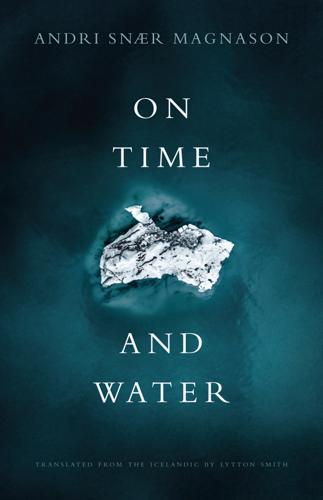
On Time and Water
by
Andri Snaer Magnason
Published 15 Sep 2021
Arctic terns nest next to driftwood from Siberia; mines from World War II lie about alongside rusted oil barrels marked Wehrmacht and a Russian listening buoy from the Cold War. The terns hatch from their eggs and fly to South Africa eight weeks later. On the shore one can find plastic bottles of Ajax cleaning detergent, brown bottles with an odd gunk at the bottom; a practically undamaged right shoe; and a Filipino sailor’s safety helmet, labeled R. Marquez—that’s how I learned that Spanish naming customs are prevalent in the Philippines. A short distance from our farm, there’s an inlet where the seals nurse their pups and bask on rocks. My daughters have sung some fun songs to them and sometimes the seals assemble, ten or so of them, for a concert.

In the Devil's Garden: A Sinful History of Forbidden Food
by
Stewart Lee Allen
Published 1 Jan 2002
As the officers stood puzzling over the situation (now if I were a dog, where would I hide my head?), they noticed a number of Asians armed with bows and arrows wandering about. The dogs, it seemed, belonged to the Laotians in the gustatory sense. The incident appeared in the papers, and overnight Californians realized that a tribe of quasi-cannibals had invaded their state. Filipino sailors were accused of sneaking into suburbs for nocturnal dog hunts. A lady in Sacramento discovered her children’s favorite pooch hanging by its tail at a neighborhood barbecue, skinned, flayed, and waiting for the kiss of the smoking grill. A San Francisco man found his spaniel in a Chinese neighbor’s garage under suspicious circumstances.
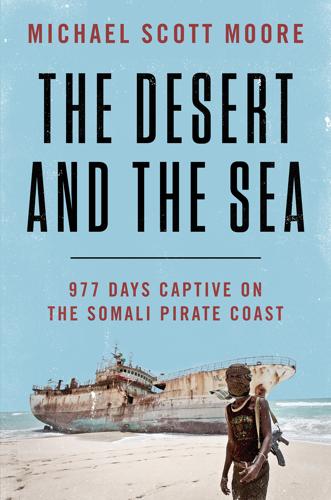
The Desert and the Sea: 977 Days Captive on the Somali Pirate Coast
by
Michael Scott Moore
Published 23 Jul 2018
“We make two hundred and fifty dollars a month,” said Arnel, still using the present tense, because, even as hostages, the men expected to be paid through the end of their contracts. He added, in a sweet, ironic-dolorous tone, “Small money!” Step Up Marine Enterprise later changed its name on the shop at the mall, and its owner, Victor Lim, was charged with trafficking Filipino sailors in another case. Other Naham 3 crewmen would tell similar recruitment stories. And now they were hostages in Somalia, where pirates were happy to treat them like thieves. A number of pirate bosses had boarded the Naham 3 when it anchored in Hobyo, and they beat the Chinese crew with broom handles.
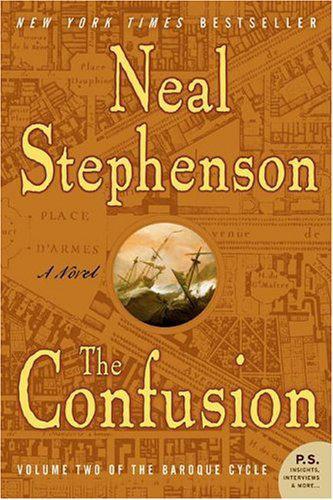
The confusion
by
Neal Stephenson
Published 13 Apr 2004
Book 4 Bonanza Japan MAY 1700 DAPPA EXCHANGED MALABAR-WORDS with three black sailors who had just hauled in the sounding-lead, then turned toward the poop deck and gave van Hoek a certain look. The captain stretched out a mangled hand towards the bow, then let it fall. A pair of Filipino sailors swung mauls, dislodging a pair of chocks, and the head of the ship pitched upward slightly as it was relieved of the weight of the anchors. Their chains rumbled through hawse-holes for a moment, making a sound like Leviathan clearing its throat. Then chains gave way to soft cables of manila that slithered and hissed across the deck for quite a few moments, gathering force, until everyone abovedecks began to doubt if the Malabari sailors with the sounding-lead had really gotten it right.
…
Yours affectionately, Leibniz Book 4 Bonanza The Pacific Ocean LATE 1700 AND EARLY 1701 Such are the Diseases and Terrors of the long Calms, where the Sea stagnates and corrupts for Want of Motion; and by the Strength of the Scorching Sun stinks and poisons the distrest Mariners, who are rendered unactive, and disabled by Scurvies, raging and mad with Calentures and Fevers, and drop into Death in such a Manner, that at last the Living are lost, for Want of the Dead, that is, for want of Hands to work the Ship. —DANIEL DEFOE, A Plan of the English Commerce M INERVA DROPPED ANCHOR below the burning mountain of Griga in the Marian Islands on the fifth of September. The next day the Shaftoe boys and a squad of Filipino sailors went ashore and ascended to the rim of a secondary cinder-cone on the western slope of the mountain proper. They established a watch-post there, within sight of Minerva. For two days they flew a single flag, which meant We are here, and still alive. The next day it was two flags, which meant We have seen sails coming out of the west, and the day after that it was three, meaning It is the Manila Galleon.
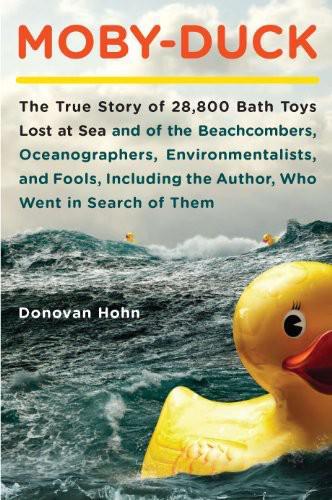
Moby-Duck: The True Story of 28,800 Bath Toys Lost at Sea and of the Beachcombers, Oceanographers, Environmentalists, and Fools, Including the Author, Who Went in Search of Them
by
Donovan Hohn
Published 1 Jan 2010
Most of these, he says, “simply get put down to ‘bad weather.’ ” “The shipping industry is decades behind the airline industry” in its management of risk, says Geoffrey Gill, the maritime attorney I’d spoken with. Why? “Because there are no passengers, and because most merchant mariners these days are Filipino. A lot of people don’t seem to care if twenty-five Filipino sailors drown.” And drown they do. How many, exactly? Nobody knows for sure, but the number of accidental seafaring fatalities appears to exceed one thousand lives per year, and the number-one cause of death is believed to be drowning. Maritime losses—of cargo, vessels, digits, limbs, life—are enough to fill a few pages of the Lloyd’s List weekly Casualty Report.

Countdown: Our Last, Best Hope for a Future on Earth?
by
Alan Weisman
Published 23 Sep 2013
Her mother was one of seven, her father one of eleven. When they married, boar, deer, and river eel were already growing scarce, so they held themselves to four and taught their children why. Castro planned to study obstetrics, but in the 1990s, growing numbers of OFWs were returning infected with HIV—especially Filipino sailors, working the flagships of practically every maritime nation. After graduating, she ran an AIDS counseling hotline, phones being the safest way in a homophobic Catholic country for a frightened person to approach a doctor about sexually transmitted disease. The program was underwritten by USAID, and young Joan Castro caught the eye of Leona D’Agnes, an American public health specialist.

The Man Who Knew Infinity: A Life of the Genius Ramanujan
by
Robert Kanigel
Published 25 Apr 2016
Neurotransmitter receptors occupy sites on cells of the immune system, making for a natural communications link between the two systems. Stress—overwork? worry? loneliness?—the evidence powerfully suggests, can weaken the immune system and offer a ripe field for disease. One study found that Filipino sailors serving in the American navy—typically away from home for years at a time, and for much longer than other sailors—were more TB-prone than other sailors. Researchers concluded that “emotional stress associated with separation from family and friends”—simple loneliness—may well have contributed.
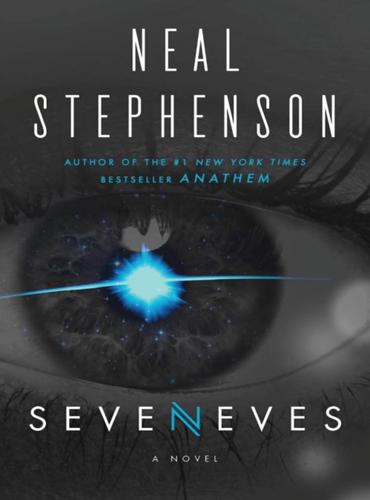
Seveneves
by
Neal Stephenson
Published 19 May 2015
They had arrived several hours ago on a passenger capsule launched from Cape Canaveral: long enough for their antinausea meds to kick in and for them to pull themselves together a little bit. It was a small contingent from the Philippines: a scientist who had been working on genetically modified strains of rice, a sociologist who had been working with Filipino sailors who spent their whole lives on cargo freighters—she’d be working with Luisa, presumably—and a pair of Arkies who, judging from looks, were from ethnic groups as different as Icelanders were from Sicilians. One of them was carrying the inevitable beer cooler. As Moira knew perfectly well—for she did this at least once a day—it contained sperm, ova, and embryos collected from donors scattered around the country of origin—in this case, the Philippines.